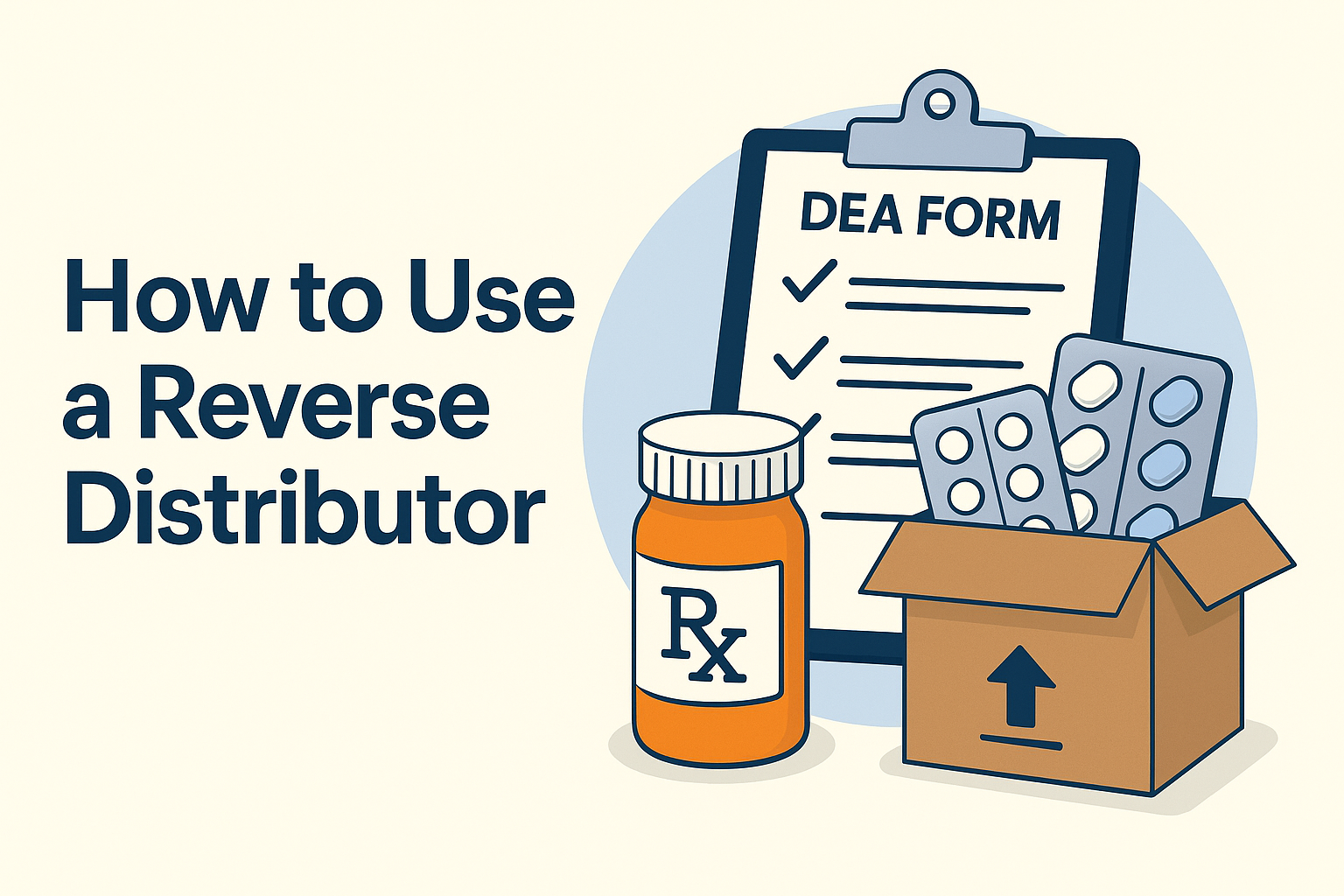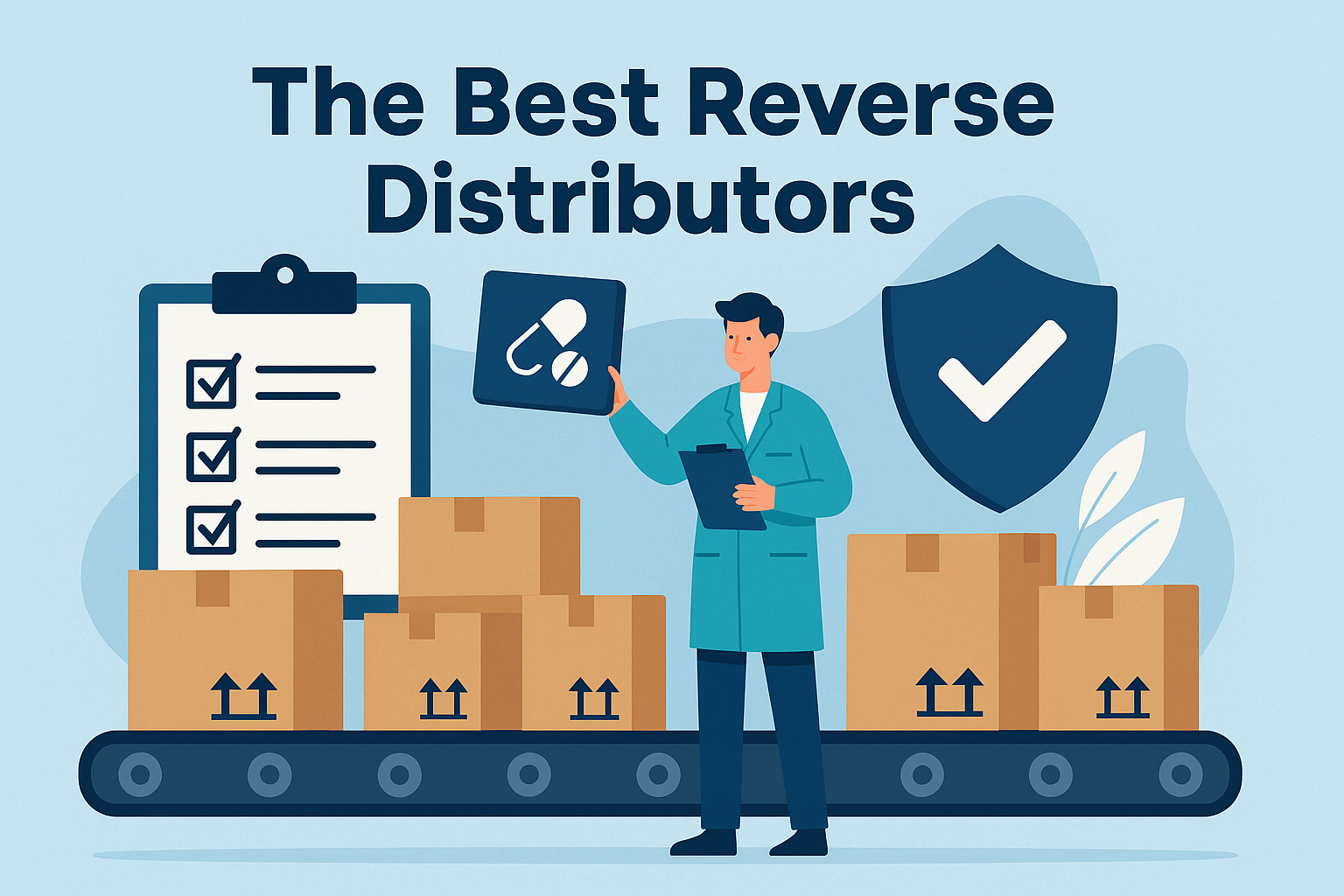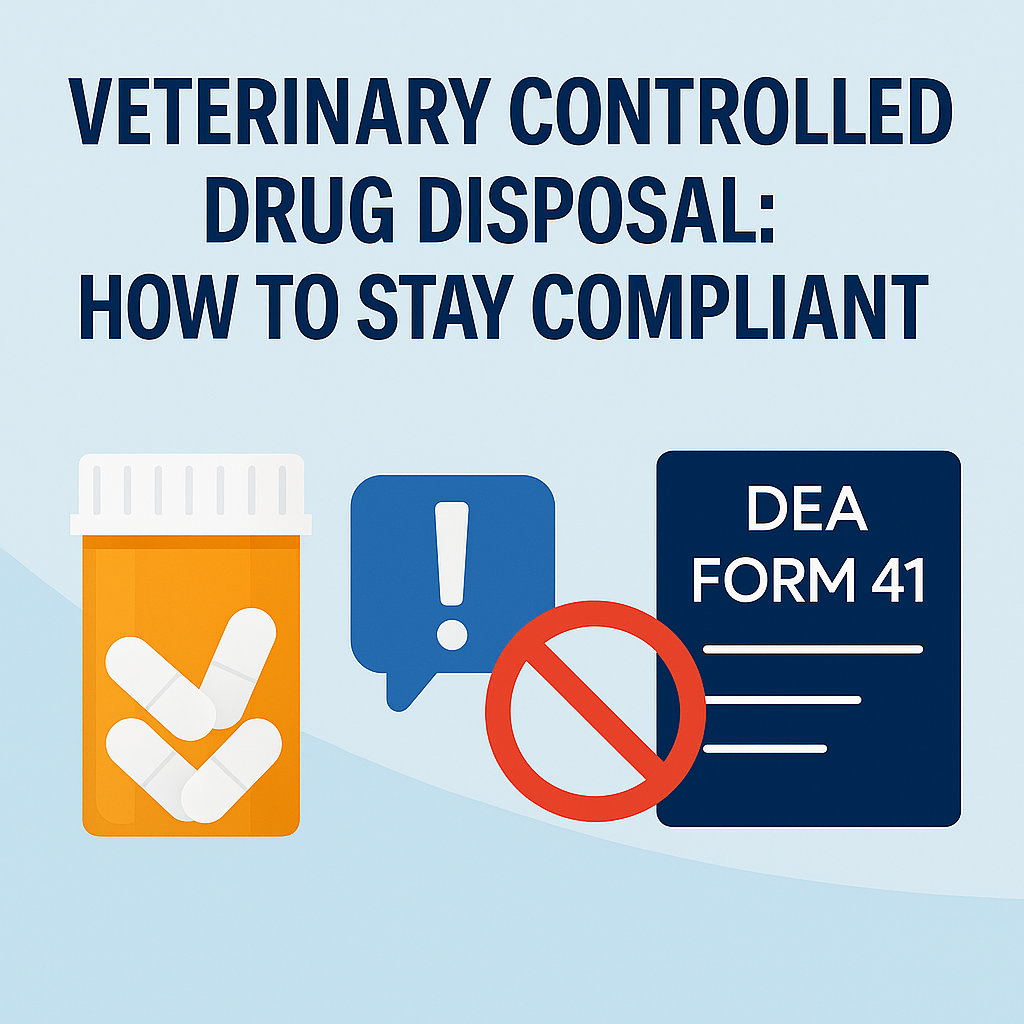Best Reverse Distributors: A Comparison
What Is a Reverse Distributor? A reverse distributor is a DEA-registered company that helps healthcare facilities, pharmacies, and DEA registrants...
3 min read
William Doxey
:
May 26, 2025 10:06:42 AM

A reverse distributor is a specialized service provider that helps healthcare facilities, pharmacies, and DEA registrants legally dispose of expired, unused, or recalled pharmaceutical products. These providers are authorized by the Drug Enforcement Administration (DEA) to handle the return, management, and destruction of controlled substances.
Instead of pushing drugs forward through the supply chain, reverse distribution moves them backward for proper removal and disposal.
This process plays a vital role in drug enforcement, protecting public health and keeping dangerous medications off the street. 🔗 Learn more about DEA drug disposal rules from the official DEA Diversion Control Division.
If your organization is a DEA registrant, you're legally responsible for ensuring that all Schedule I–V prescription drugs are disposed of in accordance with federal law. Improper handling can lead to serious consequences, including:
Loss of DEA registration
Fines and legal action
Risk to public safety and your license
Using a DEA registered reverse distributor ensures that you remain compliant, documented, and protected. Request a quote!
Use the official DEA list of reverse distributors or partner with a licensed company like Easy Rx Cycle.
Whether you’re in a retail pharmacy, hospital, or clinic, choosing a trusted provider with strong customer service ensures compliance and peace of mind.
Common providers include:
Rx Reverse Distributors Inc
Reverse Rx Distributors
Pharmaceutical Reverse specialists like Easy Rx Cycle. Got Questions? Request Help Now!
Review your inventory to locate:
Expired controlled substances
Recalled or damaged pharmaceutical products
Unused or unsellable prescription drugs
Use your inventory management system to create a report and separate the products by type, especially Schedule II controlled substances that require extra documentation. Got Questions? Request Help Now!
Used to transfer Schedule II drugs to a reverse distributor. Must be filled out before shipment.
Required to document the destruction of controlled substances. Often submitted by the reverse distributor on your behalf.
Retain copies of all documentation for at least two years, as required by the DEA. 🔗 Download DEA Form 41
Your reverse distributor will provide instructions on:
Tamper-proof packaging
Labeling controlled substances properly
Scheduling secure drug transport via authorized couriers
Receiving a Certificate of Destruction (COD) after disposal
This step is critical to completing the reverse distribution chain.
Be sure to store:
DEA Forms 222 and 41
Controlled drug disposal logs
Destruction certificates
Reverse distributor service invoices
Having an organized compliance trail is essential during DEA inspections or audits.
Need help? Request a Quote Today!
Retail pharmacies must dispose of:
Outdated stock
Unused returns from patients
Controlled drugs dispensed in error
Using a pharmacy reverse distributor helps maintain regulatory compliance and minimizes risk.
Healthcare systems rely on reverse distributors for:
Removing drugs left over from inpatient care
Disposing of recalled medications
Managing controlled substance waste from anesthesia and surgery
Many facilities now require all pharmaceutical reverse services to be integrated into their supply chain protocols.
Veterinarians are also DEA registrants. They must follow the same disposal process for ketamine, euthanasia drugs, and other controlled substances.
A reverse distributor for controlled substances ensures secure handling for both human and veterinary medicine.
When choosing a provider, make sure they offer:
Active DEA registration
Experience with controlled substance handling
Form 222 / 41 assistance
Documented chain-of-custody
Fast, helpful customer service
Easy Rx Cycle is a DEA-registered reverse distributor trusted by pharmacies, hospitals, and DEA registrants nationwide.
We offer:
Full-service reverse distribution for prescription drugs and pharmaceutical products
Secure transport and disposal of controlled substances
Custom programs for retail, mail-order, and institutional pharmacies
Step-by-step support for compliance documentation. Got Questions? Request Help Now!
Let us help you clean up your inventory, reduce liability, and stay DEA-compliant.
👉 Contact Easy Rx Cycle today to schedule a pickup or request a quote.
What is a reverse distributor?
A DEA-authorized company that helps you return, destroy, or manage expired and controlled drugs.
Do I need DEA forms to use a reverse distributor?
Yes. DEA Form 222 is used for transferring Schedule II drugs. Form 41 is used to document destruction.
Can I dispose of controlled substances myself?
Only under very specific conditions. Most facilities are required to use a DEA registered reverse distributor.
Is this required for veterinary practices too?
Yes. Veterinary controlled substance disposal follows the same rules as human healthcare.
How can I find the DEA list of reverse distributors?
Visit the DEA Diversion Control website or ask your local our compliance officer today!
Request a Quote Today!

What Is a Reverse Distributor? A reverse distributor is a DEA-registered company that helps healthcare facilities, pharmacies, and DEA registrants...

How to Dispose of Controlled Drugs for Urgent Care Centers Urgent care centers frequently administer or dispense controlled substances such as...

Reverse Distribution for Pharmacies: How to Dispose of Controlled Drugs Pharmacies handle a wide range of controlled substances, from opioids to...